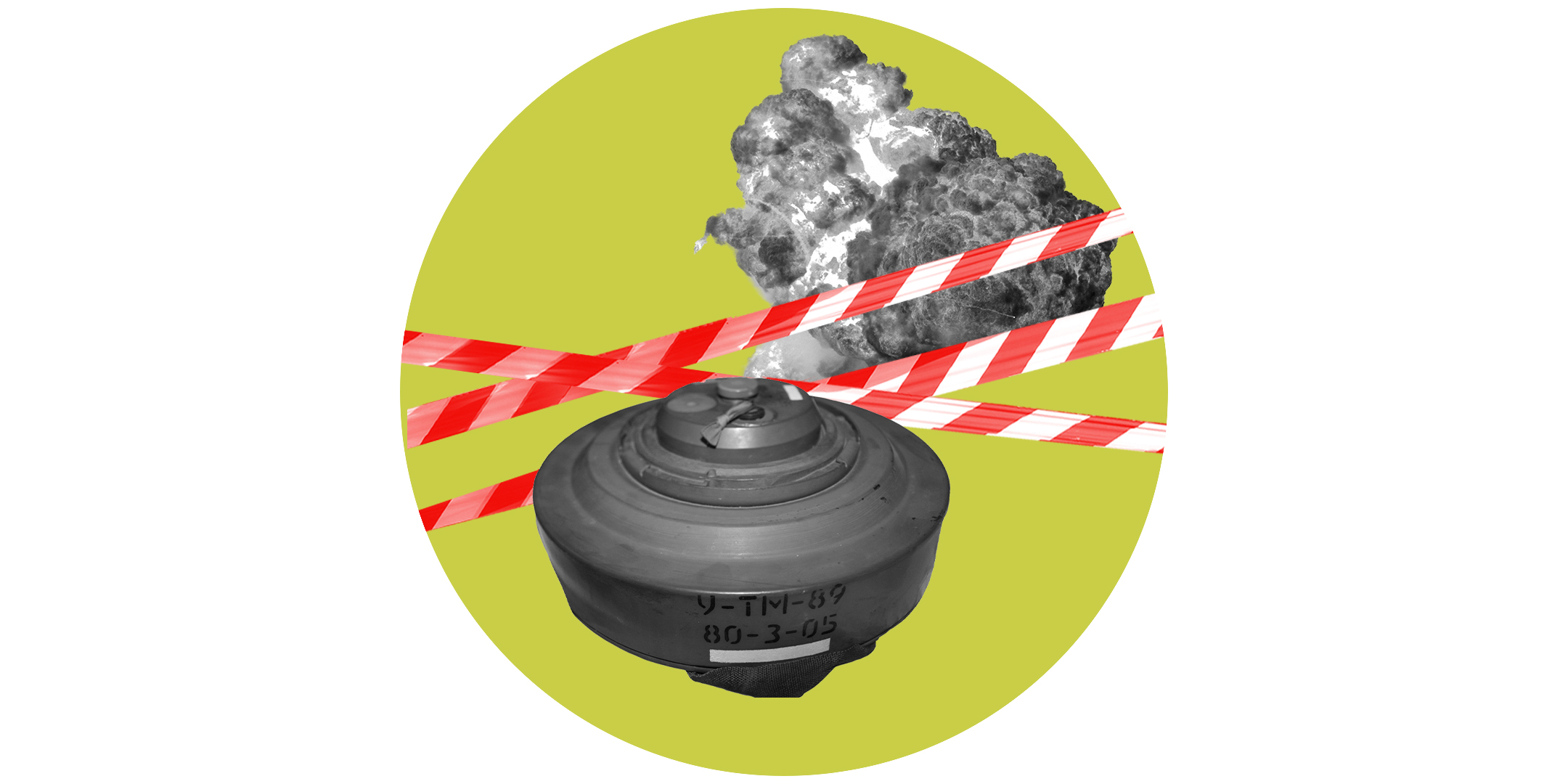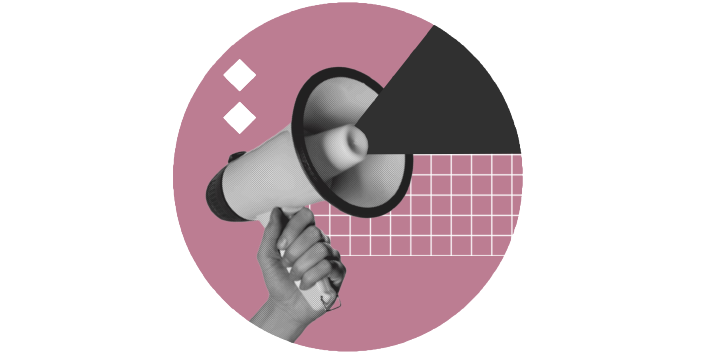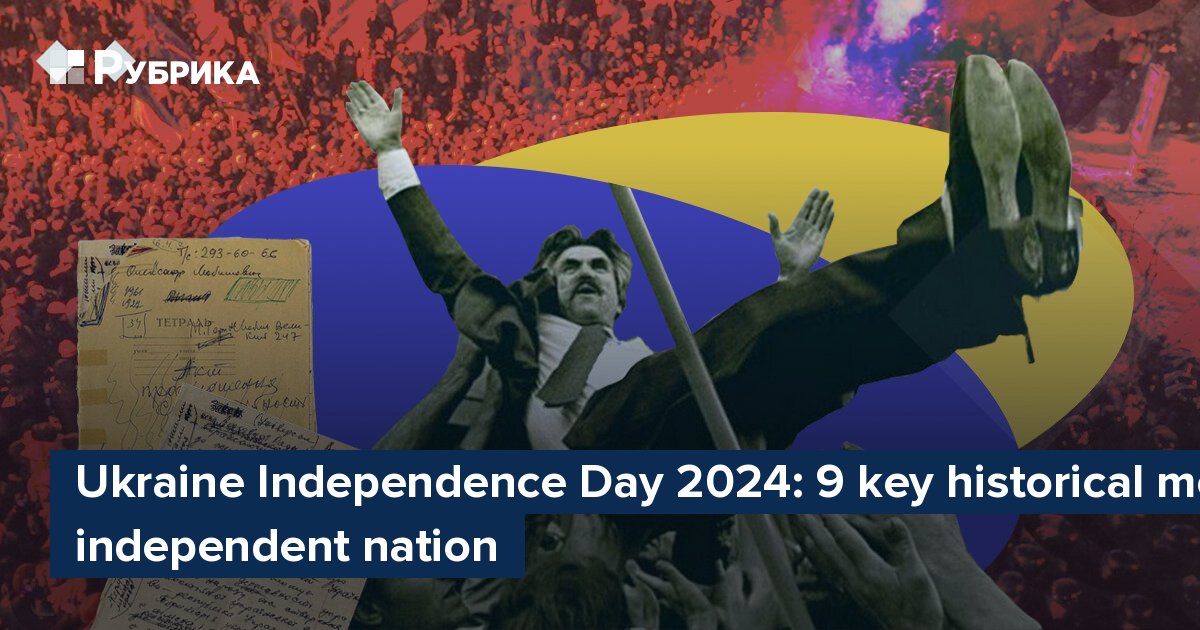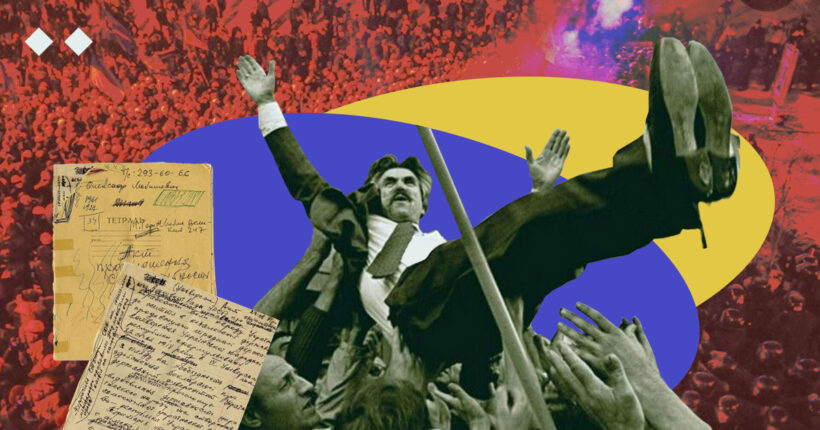
Since Russia started its full-scale war in 2022, Ukraine and its brave people have been daily proving that they are an independent and sovereign nation. As much as the Russian propaganda machine attempts to claim that "there was never such country as Ukraine and there were never such people as Ukrainians," historical facts speak for themselves.
Rubryka presents nine key moments in Ukraine's history that prove Ukrainians have always been a distinct and strong nation with a rich history of statehood and resistance.
1. Kyivan Rus

Ukraine Independence Day 2024: The portraits of Prince Volodymyr the Great and Princess Olha of Kyiv and Ukraine's coat of arms are depicted in mosaics of St. Peter's Cathedral in the Vatican. Photo: Reddit
Ukrainian statehood has its deep roots in the late 9th century when the medieval state of Kyivan Rus — often called by researchers as Kyivan Rus-Ukraine — was formed and centered around Kyiv, the capital of modern Ukraine. It was a powerful Slavic state that existed until the 13th century and was one of Europe's largest and most influential countries during the Middle Ages.
The Kyivan Rus laid the foundation for the development of a distinct Ukrainian identity, with Kyiv as its cultural and political center. The word "Ukraine" was first mentioned in 1187 in the Kyivan Chronicle and later in Tale of Bygone Years — documents covering the Kyivan Rus's history — to distinguish the Kyivan land from other medieval countries.
The seals of the ruling Rurik dynasty gave the look to Ukraine's modern coat of arms, known as tryzub — the only state symbol depicted in the mosaics of St. Peter's Cathedral in the Vatican. Volodymyr the Great, the Prince of Kyiv, also gave Ukrainians one of their defining cultural features. He converted to Christianity and baptized his people, forming the Eastern Orthodox Church. This decision significantly influenced Ukrainian national identity and culture.
2. Galicia-Volhynia
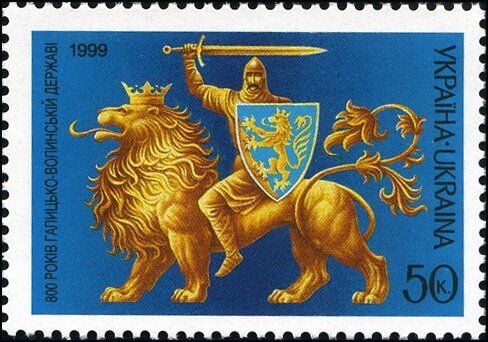
Ukraine Independence Day 2024: A 1999 postal stamp dedicated to Ukraine's history portrays a knight riding a lion and holding a sword and shield with the coat of arms of the State of Galicia-Volhynia. Photo: WikiCommons
After the decline of Kyivan Rus, the State of Galicia-Volhynia, often known in Western historical sources as the Kingdom of Ruthenia or Rus, was a significant political and economic center in Central Europe. Founded by Prince Roman Mstyslavych, the country — later kingdom after a papal envoy crowned the founder's son Danylo in 1253 — could preserve and develop Ukrainian statehood throughout the 13th and 14th centuries.
It united ethnic Ukrainian lands, protected them and the Ukrainian language and culture from conquest and assimilation, and solidified the Ukrainian national identity despite foreign states' attempts to establish their rule. The influence of Galicia-Volhynia, as a precursor to the modern Ukrainian independent state, is still felt in Ukraine today — in the colors of the Ukrainian flag taken from the Ruthenian coat of arms, which depicts the golden lion on a blue background, in the use of tryzub, inherited from the Kyivan Rus, and the tradition of resistance Ukraine upholds.
3. Cossack Hetmanate

Ukraine Independence Day 2024: The painting, Entry of Bohdan Khmelnytskyi to Kyiv in 1649, by Mykola Ivasiuk (1865–1937). Photo: National Art Museum of Ukraine/Wikimedia Commons
Ukrainian territories were divided and ruled by the Kingdom of Poland, the Grand Duchy of Lithuania, and then the Polish–Lithuanian Commonwealth for many years. During this time, Ukrainians were oppressed and forced out of their western lands into the territory of modern central Ukraine. To fight for their rights, Ukrainians began a series of rebellions led by leaders like Petro Mukha and Severyn Nalyvaiko and supported by other nations throughout the 15th and 16th centuries.
While some were successful, others failed to drastically change the situation for Ukrainians. The shift came in the mid-17th century when another uprising against Polish rule led to the founding of the Cossack state in central Ukraine. The rebellion, led by Bohdan Khmelnytskyi, secured partial autonomy for Ukrainians and allowed them to establish the Cossack Hetmanate with its own government, military, and foreign policy. The term "Hetmanate" comes from the title "Hetman," which was the leader of the Cossack state, and Khmelnytskyi became its first Hetman.
Because the Cossack Hetmanate was governed by an elected leader, it is considered a predecessor of modern Ukrainian statehood. The country was crucial for preserving Ukrainian culture and language and forming a national identity. The Cossack tradition of self-governance and resistance had a profound impact on the national consciousness of modern Ukrainians.
4. Ukrainian War of Independence
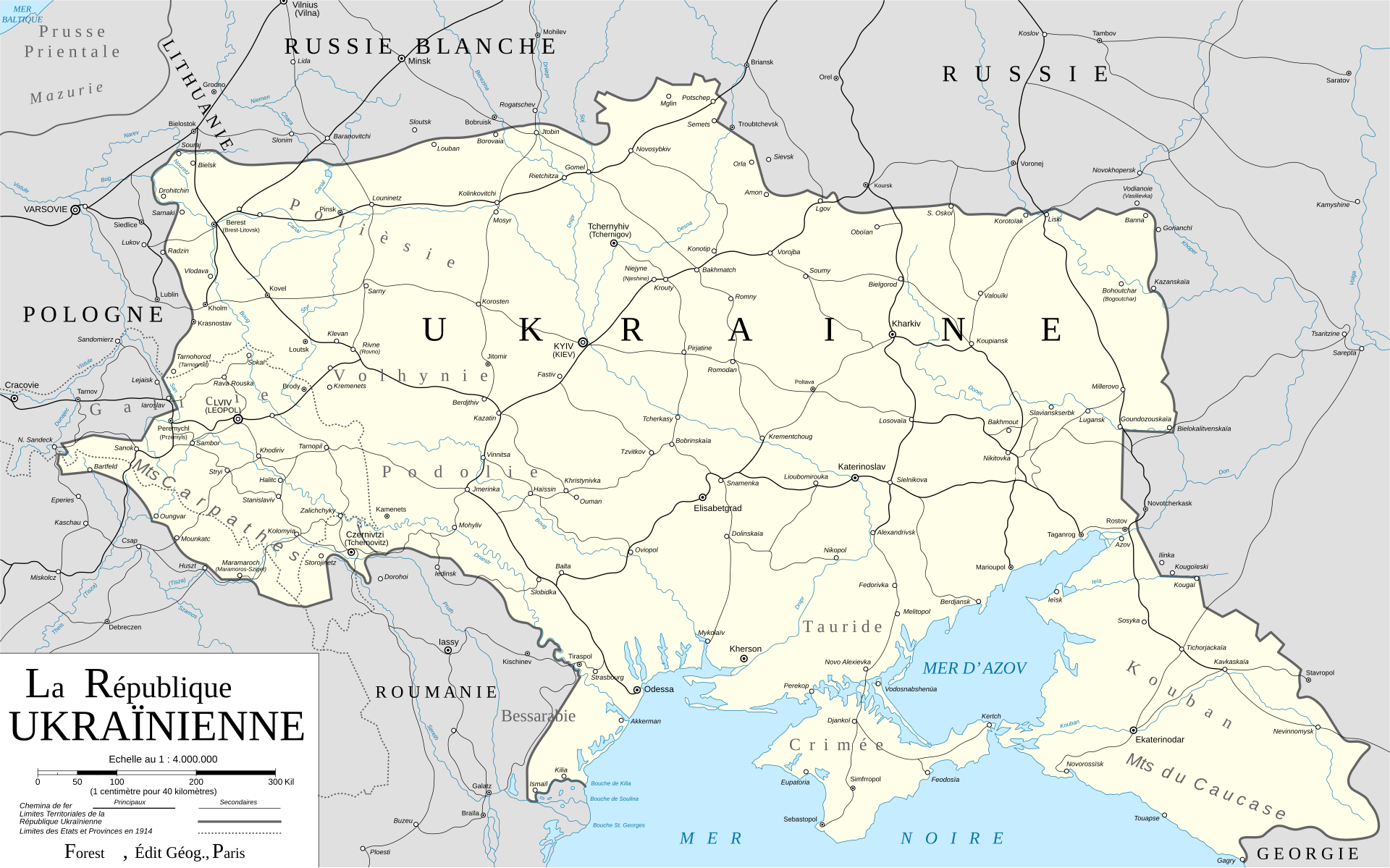
Ukraine history: After declaring Ukraine's independence, the country's leadership negotiated the territories at the Paris Peace Conference in 1919. Ukrainian delegation presented this map to approve the country's borders. Photo: WikiCommons
From the late 18th until the early 20th century, Ukraine was split between the Austrian and Russian empires. Despite being divided and discriminated against, Ukrainian intellectuals on both sides of the imperial border — writers, poets, historians, and professors — fought oppression and nurtured Ukrainian culture and the idea of independent Ukraine. In the period known as the Ukrainian National Revival, they developed the Ukrainian language that is used today.
Their ideas of a free Ukraine persisted into the early 20th century when the First World War led to the collapse of the empires. Like many nations that used to be under imperial rule, Ukraine declared its independence as the Ukrainian People's Republic (UPR) in 1917. Western Ukrainians formed the Western Ukrainian People's Republic the following year and merged with UPR, marking the unification of the Ukrainian territories. Crimean Tatars, whose lives have been interconnected with Ukraine, established their own people's republic — the world's first Muslim republic — and considered entering the Ukrainian state as an autonomy.
Because Russians still wanted to claim Ukrainian lands as their own, Ukrainians had to fight until 1922 to preserve their sovereignty. Even though they ultimately lost the struggle, their short-lived republic paved the way for the future independent Ukraine.
5. Declaration of Independence
Under the Soviet occupation, Ukrainians and Crimean Tatars went through unimaginable horrors — repressions, killing, Gulag camps, man-made famine, deportations, and more at the hands of Moscow — and suffered catastrophic losses during the Second World War.
Despite losing many people to the war and occupation, Ukrainians continued their struggle during the Soviet times through dissident and opposition movements. Historical events, like student protests and hunger strikes, notably the Revolution on Granite, built up resentment and discontent against the Soviet authorities, leading to the dissolution of the USSR.
The years of never giving up culminated on August 24, 1991, when Ukraine declared and restored its independence as the sovereign country we know today. The decision was approved by a referendum in which over 90% of voters supported freedom, with the majority in all regions, including Crimea. Ukrainians will celebrate this moment again on Ukraine Independence Day in 2024.
6. Orange Revolution

Ukraine Independence Day 2024: Supporters of Viktor Yushchenko sing at a rally as part of the Orange Revolution — a crucial event in Ukraine's history — in 2004. Photo: Gali Tibbon /AFP
After nearly 15 years of independence and two presidents, Ukraine witnessed another presidential election. Two candidates, Viktor Yanukovych, the Russia-backed incumbent Prime Minister of Ukraine, and ex-PM Viktor Yushchenko, who advocated for closer ties with the West and eventual EU membership, contended for the votes of the Ukrainian people.
Yanukovych, who falsified the results in his favor, was declared the winner by a narrow margin in the 2004 runoff election. After many Western observers expressed concern that the election was rigged, Yushchenko and his supporters fought for the democratic elections, taking to the streets to protest the results. Massive protests, now called the Orange Revolution due to the use of this color by Yushchenko's campaign, erupted across Kyiv and other cities and demanded the re-run.
In response, the Ukrainian Supreme Court declared the election falsified and annulled the results. In a court-ordered runoff, Yushchenko won 53% of the votes. That year, Ukrainians stood up for their beliefs and rights to democracy and Ukrainian statehood on their terms.
7. Euromaidan

Ukraine Independence Day 2024: Thousands of Ukrainians protested against then-President Yanukovych on the central square, Maidan Nezalezhnosti, in Kyiv in 2013-2014. Photo: Atlantic Council
When Viktor Yanukovuch finally managed to take power after winning his second presidential election, Ukraine experienced an economic and cultural downfall. The Ukrainian president and his party started to monopolize control over the media, judiciary, and government, imprisoning opposition leaders and undermining grassroots movements.
The last straw was Yanukovych's decision not to sign the Ukraine–European Union Association Agreement and to establish closer ties with Russia as an alternative. The Ukrainian people, who long awaited the signing, spoke up in 2013 at peaceful protests in Kyiv at the central Independence Square, called Maidan Nezaleshnosti in Ukrainian, holding Ukrainian and EU flags. These rallies grew into mass Euromaidan protests and reached a pinnacle in the Revolution of Dignity in 2014 — one of the most crucial events in the history of Ukrainian statehood.
As protesters and police clashed in Kyiv, over 100 people, Ukrainian poets dubbed the Heavenly Hundred, were murdered fighting for freedom and democracy. Yanukovych fled the country to Russia, and the Ukrainian parliament voted to officially remove him from power and make him a thing of the past. The Revolution of Dignity and its activists defended their values and rights to a free, independent future.
8. Russia's war in Donbas and invasion of Crimea

Ukraine history: Ukrainian activists, holding Ukrainian and Crimean Tatar flags, protest against the Russian invasion in front of the Crimean parliament in Simferopol in February 2014. Photo: Vasiliy Batanov /AFP
In 2014, once again, Russian revealed its true face as the aggressor. When Ukraine was going through a transformative period after the Revolution of Dignity, Russia's "green men" without insignia captured the parliament building and military facilities in Crimea. Even though Crimeans protested the invasion, Russia organized a sham referendum and annexed the Crimean peninsula, marking the first Russian invasion of Ukraine and the beginning of the Russian-Ukrainian war.
Later that year, Russia challenged Ukrainian statehood, starting the invasion of the Donbas region in Ukraine's east, backing militants led by former Russian Federal Security Service officer Igor Girkin. Russian proxies started occupying eastern Ukrainian towns, using lies to justify their actions. Ukrainians didn't hold back their response — Ukraine's leadership announced an Anti-Terrorist Operation (ATO), and volunteer fighters gathered to protect their homeland.
Ukrainian forces reclaimed territories from Russian-backed troops, including Mariupol and other cities in eastern Donetsk and Luhansk regions. However, the year also saw significant tragedies: Russian forces downed a civilian plane, Malaysia Airlines Flight MH17, killing 298 people. They also killed 368 Ukrainian soldiers in what is now known as the Ilovaisk massacre.
The international negotiations between Russia and Ukraine in the Belarusian city of Minsk and the agreements signed and designed to freeze the conflict proved ineffective against Russian imperial ambitions. This period, however, showed the unbelievable courage of Ukrainian soldiers who took up arms to defend the truth, Ukrainian people and cities. In legendary battles, like in the Donetsk Airport, they showed what the Ukrainian resistance means.
9. Russia's full-scale war
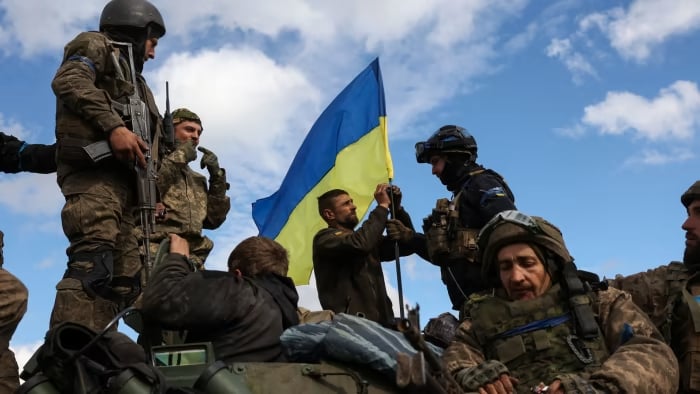
Ukraine Independence Day 2024: Ukrainian soldiers hoist their national flag to an armored vehicle in the Donetsk region. Photo: Anatolii Stepanov/AFP
On February 24, 2022, at 3:40 a.m., Russia started its full-scale invasion of Ukraine on land from the north, east, and south and unleashed air strikes targeting cities all over Ukraine. Justifying the attack as a "special military operation," Putin declared war on Ukraine, and Russian forces brought destruction and murder, committing horrible atrocities and war crimes against Ukrainian civilians in Bucha, Mariupol, Izium, Kherson, and other cities.
What Russia didn't expect was geopolitical repercussions from the international community and the powerful resistance of the Ukrainian civilians and armed forces. Mass protests against Russian occupation ensued in the captured cities as Ukrainian troops repelled the attack along the entire front line. As many times in Ukraine's history, Ukrainian people united for their country and proved they were a brave, strong, and distinct nation whose future is independent and free.
After many successes on the battlefield — the liberation of Kyiv, Sumy, Chernihiv, Kharkiv, and Kherson regions, the sinking of the Russian Black Sea Fleet, and more — Ukrainian soldiers are still fighting against the Russian onslaught and protecting their land and coming up with ingenious solutions to push out the enemy from Ukraine. Ukrainian civilians have supported them and never given up their beliefs and values — even after all the horrors at the hands of Russian soldiers were revealed, after massive air strikes and blackouts, after displacement, and after losing their homes and loved ones.
The unprecedented unity of Ukrainians in the teeth of the Russian aggression illustrates the deep-rooted resistance, freedom, and independence in Ukraine's people. With the continued support of allies and friends worldwide, Ukraine, as a distinct and conscious nation, will persevere, achieve long-awaited justice and peace, and rise in the world once again.



